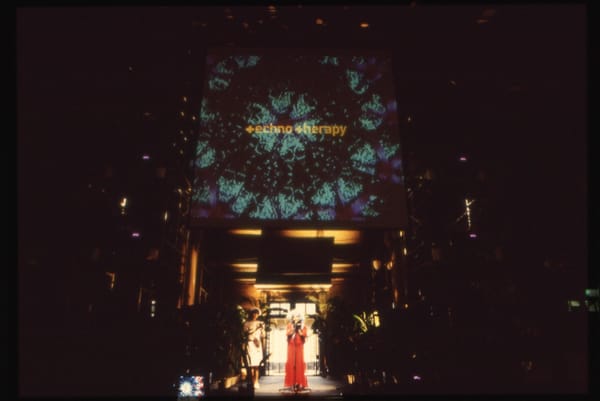Ideas
Pendulating Identities: The Digital Doubles of Korean Artists



The seemingly limitless expanses of what we call digital space are powerful catalysts for explorations of alternative identities. Online, you can be yourself, or any number of selves, and, through these multiple virtual presences, one can communicate with a vast number of people. Fluid transitions from one’s offline identity to digital personalities have penetrated the contemporary art scene as well. Across social media and content-sharing platforms such as YouTube and Vimeo, artists divide, duplicate, and dramatize themselves. While the identities of these practitioners ceaselessly pendulate, the boundary between art and digital content gradually fades, and the dichotomy is broken. With ever-expanding personae, the two Korean artists Sungsil Ryu (b. 1993) and Dew Kim (b. 1985) are among those at the forefront of these transformations and digital possibilities.
One of the avatars of Ryu is BJ Cherry Jang (BJ stands for “Broadcasting Jockey,” Cherry’s supposed job at Afreeca TV, a video streaming service based in South Korea). Cherry is a woman who appears in bizarre make-up and eccentric costumes that belie the esteemed titles—such as First-Class Citizen and Goodwill Ambassador for the International Peace Organization—that introduce her when she appears on the screen of her one-person media platform. Since her debut in 2018 in the six-minute video BJ Cherry Jang 2018. 4 (2018), a part of the Cherry Bomb (2018) video project staged with audiovisual production team eobchae, she has attracted roughly 200,000 viewers per upload. She calls her subscribers oppa—a Korean word that literally means “older brother,” and that can have flirtatious inflections. In Cherry Jang 2018. 4, she asks her followers to send money to her bank account to be exonerated first-class citizens in heaven as, she says, North Korea has just launched a nuclear missile heading for Seoul. In the comment section, a significant number of viewers confess that they felt influenced by this silver-tongued YouTuber and her evangelical “secret methods” for eternal happiness. By emulating fake news and employing the same mechanisms that are commonly used to disseminate misinformation, Ryu draws attention to and critiques the post-truth media environment.

The tour guide Natasha is another character that Ryu performs. Natasha has a similar appearance to Cherry but is an altogether different personality with an unidentifiable accent. She stars in Big King Travel 2020 (2020), an interactive video that evolved from the single-channel video Big King Travel Ching Chen Tour – Mr. Kim’s Revival 2019 (2019). In this series, Natasha guides a group of elderly people on a 15-minute cruise around Ching Chen, an imaginary city somewhere in Asia. Audiences are invited to join the trip, which nods to those that children in South Korea often purchase for their parents as a sign of filial piety. Natasha encourages people to take meaningless selfies whenever they arrive at a site, and the itinerary ends with a dinner show by female singers and dancers. Just before the tour disbands, one of the guests, Mr. Kim, who secretly tried to photograph Natasha’s body during the tour, abruptly declares that he fell in love with her at first sight because of her beauty. Through this satirical scenario, the artist highlights the deep-seated gender dynamics of Korean society, including the objectification of women.
In the same vein, Dew Kim, also known as Huh Need-you, has broached the topics of polyamory, pansexuality, and queerness by bridging pop culture with the traditions of Korean shamanism, in which women shamans often cross-dress as men. Kim’s K-pop star persona, HornyHoneydew, made his debut on YouTube in 2018 by uploading his first music video, Purple Kiss ♡ (2018). While the song sounds like a typical love ballad, the footage, set in a posthuman world, includes a sci-fi storyline where Homo sapiens mutate into cyborgs with the aid of shamanism. The video conjures a sense of déjà vu through its deployment of familiar tropes from Korean contemporary music videos, such as point choreography and repetitive hooks. Kiss of Chaos ☆ (2020), HornyHoneydew’s second single, similarly imitates the characteristics of pop music. For example, the repetition of the filler word “Woah” in the hook, “(Woah Woah) Now we’re on fire, (Woah Woah) I’m out of breath,” apes the reiteration of dynamic phrases in K-pop songs, which are accompanied by easily learned, memorable dances. Like in Purple Kiss ♡, the storyline revolves around a romantic relationship, while on screen, shamanic practices, including the burning of a sacred text, unfold. Collaborating with entertainment industry professionals such as vocal trainers, choreographers, and make-up artists, Kim goes above and beyond creating an effective parody character—HornyHoneydew becomes an alter-ego in the truest sense, inhabiting a fully-wrought imaginary world. In this, Kim sagaciously takes advantage of K-pop’s tremendous popularity to foreground controversial symbols of queerness and shamanism, which have long been regarded as taboo in Korean society.
Cherry, Natasha, and HornyHoneydew all entered the digital realm as rebels, and dazzled audiences with their alluring, manufactured personalities. With this in mind, how should we perceive their rapid ascent? What does the emergence of these personae in contemporary art foretell of the future? What is certain now is that the parallel universes that Ryu and Kim constructed mirror the ails of our contemporary society. Within these reflections, we might be able to glean alternative modes of being.
Minji Chun is the third-place winner of ArtAsiaPacific’s 2021 Young Writers Contest. She is an art critic and curator focused on hidden narratives and spaces. She researches, writes, and translates texts on contemporary art.
To read more of ArtAsiaPacific’s articles, visit our Digital Library.







